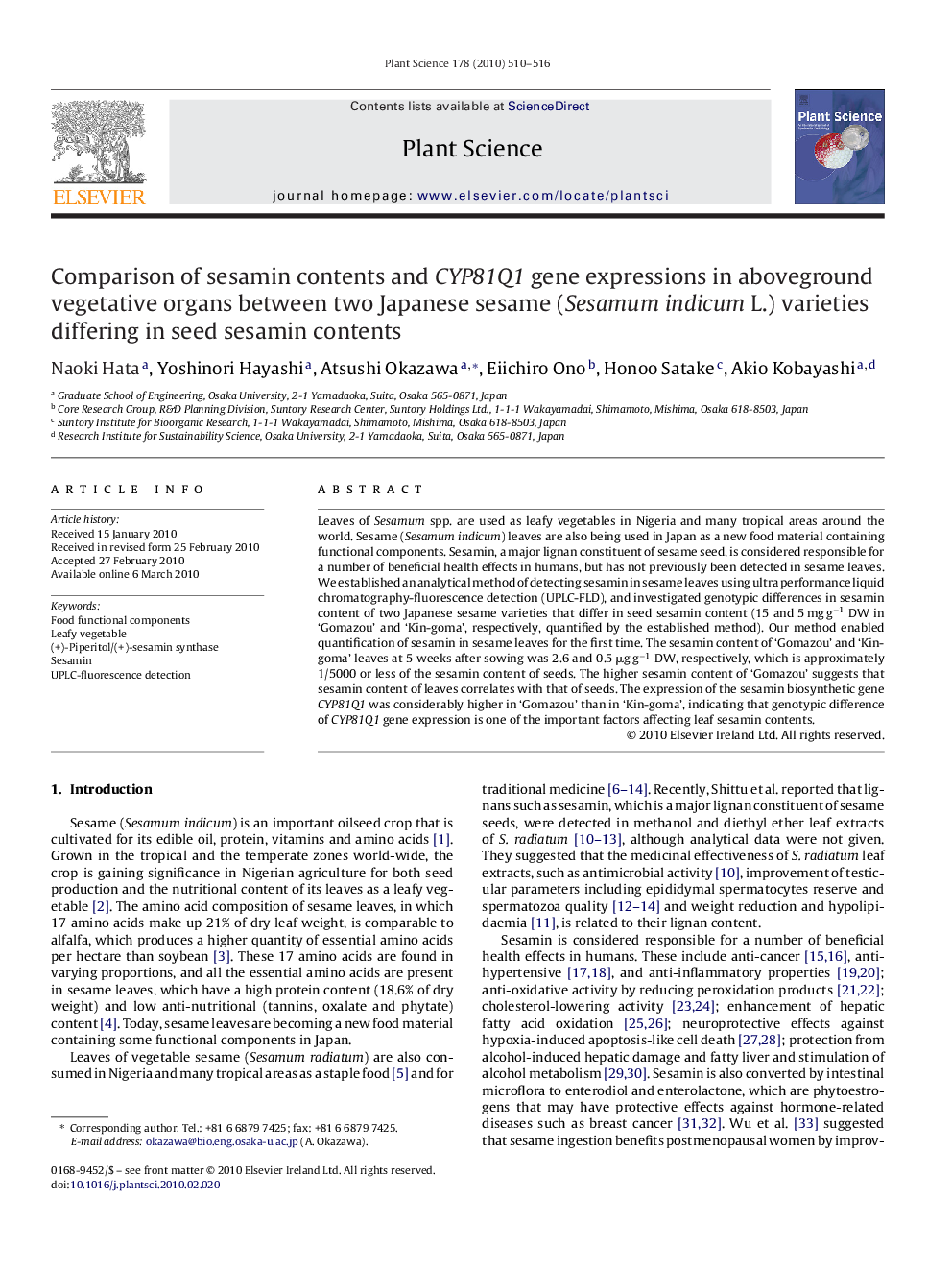| Article ID | Journal | Published Year | Pages | File Type |
|---|---|---|---|---|
| 2017900 | Plant Science | 2010 | 7 Pages |
Leaves of Sesamum spp. are used as leafy vegetables in Nigeria and many tropical areas around the world. Sesame (Sesamum indicum) leaves are also being used in Japan as a new food material containing functional components. Sesamin, a major lignan constituent of sesame seed, is considered responsible for a number of beneficial health effects in humans, but has not previously been detected in sesame leaves. We established an analytical method of detecting sesamin in sesame leaves using ultra performance liquid chromatography-fluorescence detection (UPLC-FLD), and investigated genotypic differences in sesamin content of two Japanese sesame varieties that differ in seed sesamin content (15 and 5 mg g−1 DW in ‘Gomazou’ and ‘Kin-goma’, respectively, quantified by the established method). Our method enabled quantification of sesamin in sesame leaves for the first time. The sesamin content of ‘Gomazou’ and ‘Kin-goma’ leaves at 5 weeks after sowing was 2.6 and 0.5 μg g−1 DW, respectively, which is approximately 1/5000 or less of the sesamin content of seeds. The higher sesamin content of ‘Gomazou’ suggests that sesamin content of leaves correlates with that of seeds. The expression of the sesamin biosynthetic gene CYP81Q1 was considerably higher in ‘Gomazou’ than in ‘Kin-goma’, indicating that genotypic difference of CYP81Q1 gene expression is one of the important factors affecting leaf sesamin contents.
